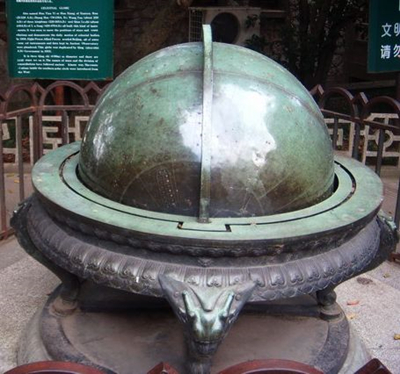Celestial Globe

Also known as Hun Tian Yi or Hun Xiang in antiquity. Zhang Heng (A.D. 78—139 ) of the Eastern Han (A.D. 25—220), Wang Fan (about A.D. 250) of the Three Kingdoms (A.D. 222—280), and Qian Le-zhi (about A.D. 440) of the Liu Song Period (A.D. 420—479) had once engaged in building a similar instrument, which was aimed to show the location of stars and constellations, and to demonstrate the daily motion of celestial bodies. As the Eight-Power Allied Forces invaded Beijing in 1900, the Ancient Observatory there was looted and most ancient astronomical instruments were taken away. This Celestial globe was duplicated by the Qing (A.D. 1644—1911) Government in 1903.
This instrument is three Qing feet (0.96m) in diameter, on which 1449 stars had been embedded, following the Chinese-style designations and the division of constellations established in ancient China. The constellations inside the southern polar circle were introduced from the West in late Ming dynasty.